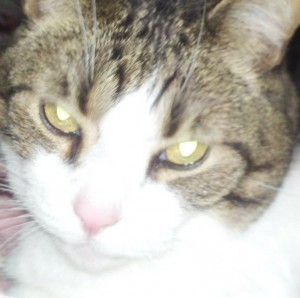Dastardly Doggy Breath ☆
 There’s nothing worse than bending down for doggie kisses and instead getting a faceful of stinky breath! What ever happened to that sweet clean breath and those pearly white teeth? That nasty smell can be an indicator of an underlying health problem, loose teeth or the build up of plaque and tarter. There are some common misconceptions as to what causes poor dental health and also about how to maintain good dental health.
There’s nothing worse than bending down for doggie kisses and instead getting a faceful of stinky breath! What ever happened to that sweet clean breath and those pearly white teeth? That nasty smell can be an indicator of an underlying health problem, loose teeth or the build up of plaque and tarter. There are some common misconceptions as to what causes poor dental health and also about how to maintain good dental health.
Domesticated dogs have a much different lifestyle and diet than their wild ancestors. Our dogs of today are usually fed diets that contain grains and starches. These components alone have the potential to cause dental disease. Grains and the gluten they contain coat the teeth with the building blocks of plaque. As more of these grains and starches are ingested, more plaque and tarter form. Bacteria also thrive in the environment created by these dietary inclusions. One of the common misconceptions dog owners have is that dry kibble diets and biscuits given as treats will help to remove these deposits. This can’t be further from the truth! If grains and starched removed plaque and tarter, we would be brushing our teeth with crackers!
When fed a species appropriate diet, like raw meat diets, the enzymes in the mouth change into an environment that does not support the buildup or the bacteria. Also, when dogs are given the opportunity to chew on harder bones such as femur bones, the edges of the bone rub against the surface of the tooth to remove any buildup. Bones are nature’s toothbrushes! If you have a dog that doesn’t like to chew hard bones, there are other alternatives too. Brushing your dog’s teeth on a regular basis will also help to keep his mouth healthy.
If your dog won’t tolerate brushing, there are now natural dental sprays that will do the job for you. The sprays also kill any bacteria that would cause gingivitis. Another alternative is a kelp based food additive that changes the enzymes in the mouth to help prevent the buildup and the bacterial growth.
Since there are many ways to keep that “doggy breath” under control, there is no reason not to get down and let the kissing begin!!
Until next time my Furry Followers!




Leave a Reply